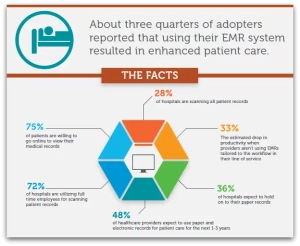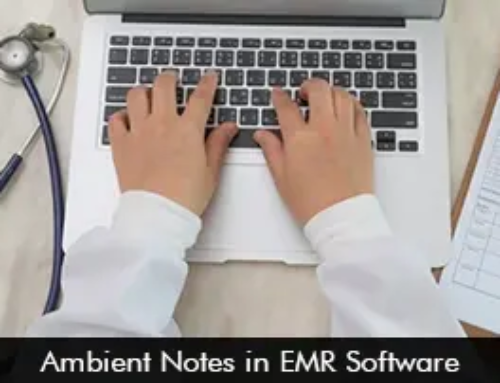Healthcare efficiency with EMR software has always been the end goal when designing the software. In an era where technology has transformed various industries, the healthcare sector has also gone through a digital revolution.
Electronic Medical Record (EMR) software is revolutionizing the way healthcare providers manage patient information. It has helped streamline workflows and improve overall efficiency. Gone are the days of bulky paper files and manual data entry. EMR software empowers healthcare professionals to deliver high-quality care while reducing administrative burdens.
In this blog, we will explore the power of EMR software and how it unlocks efficiency in healthcare settings.
Streamlining Documentation and Information Management
One of the primary advantages of EMR software is its ability to streamline the documentation and information management process. Traditional paper-based systems were not only time-consuming but also prone to errors and lost records. With EMR software, healthcare providers can create, update, and access patient records electronically, eliminating the need for physical paperwork.
EMR software allows healthcare professionals to store a wide range of information in a centralized and secure digital database, such as:
- patient demographics
- medical history
- laboratory results
- prescription records
This centralized approach enables easy and efficient retrieval of patient information, saving valuable time for healthcare providers and improving patient care.
Workflow Efficiency With EMR Software
EMR software optimizes workflow and time management in healthcare settings. Routine tasks can be automated to save time and effort. When appointment scheduling, prescription management, and billing are already taken care of, healthcare providers can focus more on patient care.
Additionally, patient care itself becomes seamless with EMR software. Access to patient records, previous diagnoses, and treatments are all available at the click of a button on one device. This enhanced accessibility and collaboration streamline the decision-making process, leading to improved patient outcomes and increased efficiency.
Moreover, EMR software often includes features such as electronic prescribing, which allows healthcare providers to send prescriptions directly to pharmacies electronically. This eliminates the need for paper prescriptions and reduces the chances of errors, ensuring patient safety while saving time for both healthcare providers and pharmacists.
Data Analytics Efficiency With EMR Software
Another significant advantage of EMR software is its ability to generate valuable data analytics and insights. By leveraging this advanced tool, healthcare organizations can identify patterns and outcomes to improve patient care and enhance overall efficiency.
The type of real-time data you can find on your EMR software:
- patient demographics
- disease prevalence
- treatment outcomes
- resource utilization
This data can be used to optimize resource allocation and implement evidence-based practices. Eventually leading to improved patient care, staff productivity, and cost-effectiveness.
Enhanced Patient Engagement and Communication
EMR software does more than bring an edge of efficiency to healthcare practitioners, it also empowers patients. Encouraging them to take an active role in their healthcare journey, EMR software provides them with easy access to their medical records. They can check their appointment scheduling and take part in secure messaging with healthcare providers.
This enhanced patient engagement not only improves patient satisfaction but also reduces the administrative burden on healthcare providers. Patients can complete pre-visit questionnaires electronically, reducing waiting times and ensuring that the healthcare team has the necessary information before the appointment.









